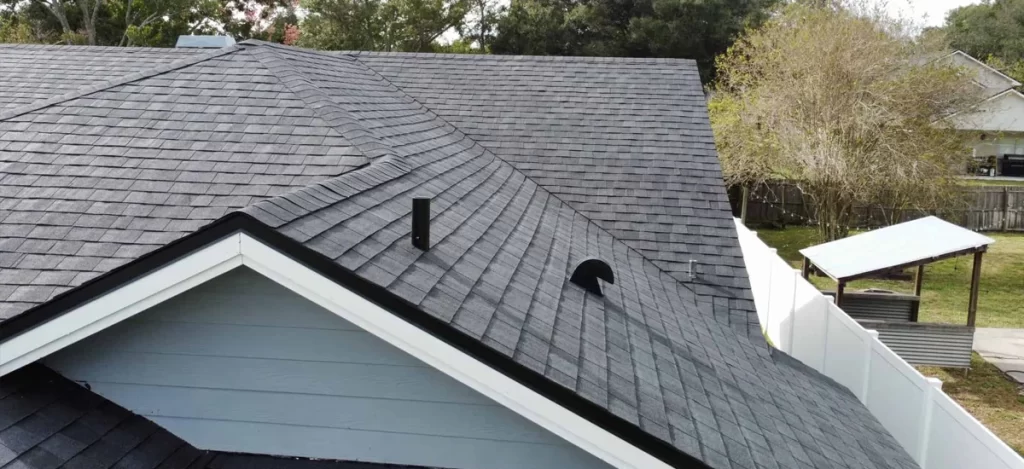Importance of Proper Roof Ventilation in Storm-Prone Regions
Proper roof ventilation is often an overlooked aspect of home construction and maintenance, yet it plays a pivotal role, especially in storm-prone regions. The combination of intense weather patterns, high humidity, and temperature fluctuations can challenge even the sturdiest of roofs. Ensuring that your roof is properly ventilated is not just a matter of energy efficiency; it is crucial for the longevity of the roof itself and the safety of the home’s occupants.
Understanding Roof Ventilation
Roof ventilation refers to the system of intake and exhaust vents that allow air to circulate through the attic space or under the roof deck. The goal is to create a continuous flow of air that prevents the buildup of moisture and heat. In storm-prone regions, where the climate can be both hot and humid, the importance of this system cannot be overstated.
Why Roof Ventilation Matters in Storm-Prone Areas
Storm-prone regions are characterized by extreme weather conditions such as hurricanes, heavy rains, and strong winds. These elements can cause significant damage to a home’s roof if it is not properly ventilated. Proper roof ventilation helps in the following ways:
- Prevents Moisture Accumulation: Storms bring rain, and with rain comes moisture. Without proper ventilation, moisture can accumulate in the attic, leading to mold growth, wood rot, and deterioration of the roof structure. This can significantly shorten the lifespan of your roof.
- Reduces Heat Buildup: In hot climates, the sun’s rays can cause the temperature in the attic to soar. This heat buildup can warp shingles, reduce their lifespan, and increase the likelihood of storm damage. Ventilation allows hot air to escape, keeping the attic cooler and protecting the roof from heat-related damage.
- Minimizes Wind Damage: During a storm, strong winds can create pressure differences across the roof. If the attic is not ventilated, these pressure differences can lead to uplift, where sections of the roof are lifted off, causing leaks and structural damage. Proper ventilation helps equalize pressure, reducing the risk of wind damage.
The Role of Attic Insulation in Roof Ventilation
Attic insulation works hand-in-hand with roof ventilation to protect your home. In storm-prone regions, insulation prevents the transfer of heat into the living spaces, reducing the load on air conditioning systems and lowering energy bills. However, without proper ventilation, the insulation itself can trap heat and moisture, leading to the same problems it was designed to prevent.
Signs of Inadequate Roof Ventilation
How can you tell if your roof lacks proper ventilation? Here are some signs to look out for:
- Excessive Heat in the Attic: If your attic feels like a sauna, it’s a clear sign that ventilation is insufficient.
- Ice Dams: In colder storm-prone regions, poor ventilation can lead to ice dams, where melting snow refreezes at the roof’s edge, causing water to back up and leak into the house.
- Mold or Mildew: The presence of mold or mildew in the attic is a red flag that moisture is being trapped due to inadequate ventilation.
- Warped or Cracked Shingles: Heat buildup can cause shingles to warp, crack, or curl, reducing their effectiveness during a storm.
Benefits of Proper Roof Ventilation
Investing in a properly ventilated roof offers numerous benefits, particularly in storm-prone regions. These benefits include:
- Increased Roof Lifespan: By preventing heat buildup and moisture accumulation, proper ventilation extends the life of your roof, saving you money in the long run.
- Energy Efficiency: Ventilation reduces the strain on your HVAC system, lowering energy consumption and utility bills.
- Enhanced Comfort: A well-ventilated attic means a cooler home in the summer and a warmer home in the winter, improving overall comfort.
- Reduced Risk of Storm Damage: Proper ventilation minimizes the risk of wind uplift and moisture damage during storms, protecting your investment in your home.
Choosing the Right Ventilation System
Selecting the right ventilation system for your roof is crucial, especially in storm-prone areas. There are several types of roof ventilation systems, each with its own advantages:
- Ridge Vents: Installed along the peak of the roof, ridge vents allow hot air to escape while drawing in cooler air from the eaves. They are effective in maintaining a steady airflow.
- Soffit Vents: Located under the eaves, soffit vents allow cooler air to enter the attic. When used in conjunction with ridge vents, they create a balanced ventilation system.
- Gable Vents: Installed on the gable ends of the roof, these vents allow air to circulate through the attic. They are often used in combination with other ventilation systems.
- Turbine Vents: These are wind-powered vents that rotate to draw hot air out of the attic. They are effective but require consistent wind to operate optimally.
Installation and Maintenance Considerations
Proper installation and regular maintenance are key to ensuring that your roof ventilation system functions effectively. Here are some considerations:
- Professional Installation: It is important to have your ventilation system installed by a professional who understands the specific needs of storm-prone regions. Improper installation can lead to inadequate ventilation and increased risk of damage during storms.
- Regular Inspections: Periodic inspections of your roof ventilation system can help identify potential issues before they become serious problems. Look for signs of wear and tear, blockages, or damage from previous storms.
- Cleaning and Repairs: Ensure that vents are kept clear of debris such as leaves, dirt, or pests that could obstruct airflow. Promptly repair any damage to the ventilation system to maintain its effectiveness.
The Cost of Ignoring Roof Ventilation
Ignoring roof ventilation, particularly in storm-prone regions, can have costly consequences. A poorly ventilated roof can lead to a host of problems, including:
- Increased Repair Costs: The accumulation of moisture and heat can cause significant damage to the roof structure, leading to expensive repairs.
- Decreased Property Value: A home with ventilation issues may suffer from mold, mildew, and structural damage, which can decrease its market value.
- Health Risks: Mold and mildew can pose serious health risks to the occupants of the home, particularly those with respiratory issues or allergies.
Real-Life Examples of Roof Ventilation Issues
Several real-life cases highlight the importance of proper roof ventilation in storm-prone regions:
- Case Study 1: A homeowner in Florida experienced significant roof damage after a hurricane. Upon inspection, it was discovered that the attic was poorly ventilated, leading to moisture buildup and wood rot. The lack of ventilation had weakened the roof structure, making it more susceptible to wind damage.
- Case Study 2: In Texas, a home suffered from severe ice damming during a winter storm. The issue was traced back to insufficient attic ventilation, which caused the warm air from the living spaces to melt the snow on the roof. The water then refroze at the eaves, causing leaks and interior damage.
These examples underscore the importance of proactive roof ventilation maintenance, especially in areas prone to extreme weather conditions.
FAQs
What is the main purpose of roof ventilation?
Roof ventilation helps regulate temperature and moisture levels in the attic, preventing heat buildup and moisture accumulation that can damage the roof structure and reduce its lifespan.
How does roof ventilation protect a home during a storm?
Proper roof ventilation helps equalize pressure during strong winds, reducing the risk of wind uplift. It also prevents moisture buildup, which can lead to mold, rot, and structural damage.
Can roof ventilation reduce energy bills?
Yes, by allowing hot air to escape and cooler air to enter, roof ventilation reduces the load on your HVAC system, leading to lower energy consumption and utility bills.
Is roof ventilation necessary in all climates?
While roof ventilation is important in all climates, it is especially crucial in storm-prone regions where extreme weather conditions can exacerbate the risks associated with poor ventilation.
How often should roof ventilation systems be inspected?
Roof ventilation systems should be inspected at least once a year, or after any major storm, to ensure they are functioning properly and free from damage or blockages.
Can I install a roof ventilation system myself?
While some ventilation systems may seem simple to install, it is recommended to hire a professional, especially in storm-prone regions, to ensure the system is properly installed and effective.
Conclusion
Proper roof ventilation is a critical component of any home, but it is especially vital in storm-prone regions where extreme weather conditions can take a toll on your roof. By ensuring your roof is well-ventilated, you can protect your home from the damaging effects of heat, moisture, and wind, extending the life of your roof and improving the overall safety and comfort of your home. Regular maintenance and professional installation of ventilation systems are key to achieving these benefits. Don’t overlook this essential aspect of home care—your roof, your wallet, and your peace of mind will thank you.














